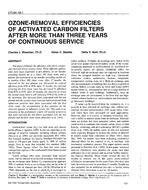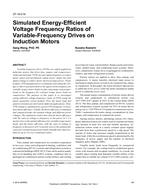Click here to purchase
Due to the negative effects of Particulate Matter exposure, more and more inexpensive optical aerosol spectrometers and photometers (low-cost PM sensors) are coming to the market, which are often used to monitor air quality. In addition to the low acquisition costs, these commercial PM sensors are characterized by low maintenance effort, which enable very high data availability in continuous operation. However, questions about the quality of the generated data often remain unanswered. To investigate the data quality and measurement accuracy of low-cost PM sensors, comparative measurements with reference devices within aerosol chambers are suitable. Aerosol chambers offer protection from external influences, provide adjustable test environments and can therefore be enormously helpful in calibrating measuring instruments. However, these chambers are not yet standardized, making computational fluid dynamics (CFD) the obvious choice for obtaining certainty about their usefulness and flow behavior. Accordingly, a prototype aerosol chamber (0.16 m³) was developed and its fluid dynamics were investigated using CFD in this parameter study. The primary goal was the optimization of the chamber geometry and the associated components such as inlet and outlet openings as well as flow straighteners in order to form a laminar flow in the test area that was distributed as evenly as possible. The simulation was performed with ANSYS Fluent 2019 R2 using the dense discrete phase model, which is a hybrid euler-lagrange approach. The gas phase (air) was modeled with the euler approach and the particle phase with the lagrange approach. The particle phase was based on a polydisperse calcium carbonate powder (ρ = 2.7 g/ml) with particle diameters from 1 to 21 μm. Results of the study include geometric optimizations of the aerosol chamber, predicted flow pattern of air velocity, predicted particle trajectories and localization of a calibration zone.
Product Details
- Published:
- 2021
- Number of Pages:
- 8
- File Size:
- 1 file
- Product Code(s):
- D-IAQ2020-C08
- Note:
- This product is unavailable in Russia, Belarus


